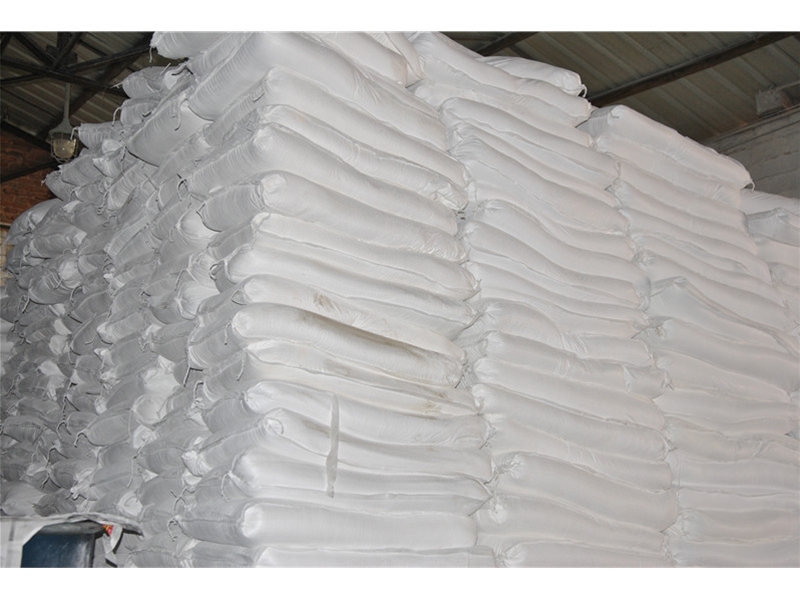Carboxymethyl cellulose (CMC)
Name and reaction principle
Chemical name: sodium carboxymethyl cellulose, also known as carboxymethyl cellulose
Carboxy Pinyin: su ō
2. Full English name: Carboxyl metal Cellulose
3. English abbreviation: CMC
Molecular formula: [C6H7O2 (OH) 2CH2COONa] n
Reaction principle
The main chemical reactions of CMC are the alkalization of cellulose and alkali to alkali cellulose and the etherification of alkali cellulose and monochloroacetic acid.
Step 1: Alkalization: [C6H7O2 (OH) 3] n+nNaOH → [C6H7O2 (OH) 2ONa] n+nH2O
Step 1: etherification: [C6H7O2 (OH) 2ONa] n+nClCH2COONA → [C6H7O2 (OH) 2OCH2COONA] n+nNaCl
physical property:
Sodium carboxymethyl cellulose (CMC) belongs to anionic cellulose ethers, and its appearance is white or yellowish flocculent fiber powder or white powder, odorless, tasteless, non-toxic; Easily soluble in cold water or hot water, forming a transparent solution with a certain viscosity. The solution is neutral or slightly alkaline, insoluble in ethanol, ether, isopropanol, acetone and other organic solvents, and soluble in ethanol or acetone solution containing 60% water. It is hygroscopic, stable to light and heat, and its viscosity decreases with the increase of temperature. The solution is stable at the PH value of 2~10, and the PH value is lower than 2. There are solid precipitation, and the viscosity decreases when the PH value is higher than 10. The discoloration temperature is 227 ℃, the carbonization temperature is 252 ℃, and the surface tension of 2% aqueous solution is 71 mn/n.
chemical property:
Cellulose derivatives with carboxymethyl substituents are prepared by treating cellulose with sodium hydroxide to form alkali cellulose, and then reacting with monochloroacetic acid. The glucose unit constituting cellulose has three replaceable hydroxyl groups, so products with different displacement degrees can be obtained. Each 1g dry weight leads to 1mmol of carboxymethyl, which is insoluble in water and dilute acid, but can swell, and is used for ion exchange chromatography. Carboxymethyl pKa is about 4 in pure water and 3.5 in 0.5mol/L NaCl. It is a weak acidic cation exchanger, usually used to separate neutral and basic proteins above pH4. If more than 40% hydroxyl group is replaced by carboxymethyl group, it can be dissolved in water to form a stable colloidal solution with high viscosity.
Main purpose:
Sodium carboxymethyl cellulose (CMC), commonly known as "industrial monosodium glutamate", is the product with the largest output, the most widely used and the most convenient use among cellulose ethers.
1. For oil and gas drilling, well digging and other projects
① The mud containing CMC can make the well wall form a thin and hard filter cake with low permeability, reducing the water loss.
② After CMC is added to the mud, the drilling rig can obtain low initial shear force, so that the mud can easily release the gas wrapped in it, and the debris can be quickly discarded in the mud pit.
③ Like other suspended dispersions, drilling mud has a certain existence period, which can be stabilized and extended by adding CMC.
④ Mud containing CMC is rarely affected by mold, so it is unnecessary to maintain a high PH value and use preservatives.
⑤ CMC is used as the treatment agent of drilling mud washing fluid, which can resist the pollution of various soluble salts.
⑥ The slurry containing CMC has good stability and can reduce water loss even if the temperature is above 150 ℃.
CMC with high viscosity and high degree of substitution is applicable to mud with low density, while CMC with low viscosity and high degree of substitution is applicable to mud with high density. CMC shall be selected according to different conditions such as mud type, region and well depth.
2. CMC is used as sizing agent in textile, printing and dyeing industry and textile industry for sizing of cotton, silk and wool, chemical fiber, blended yarn and other strong fabrics;
3. CMC can be used as paper smoothing agent and sizing agent in paper industry. Adding 0.1% ~ 0.3% CMC to the pulp can increase the tensile strength of the paper by 40% ~ 50%, the compressive cracking degree by 50%, and the kneading property by 4 ~ 5 times.
4. CMC can be used as dirt adsorbent when added into synthetic detergent; Daily chemicals, such as glycerin aqueous solution of CMC in toothpaste industry, are used as the gum base of toothpaste; Used as thickener and emulsifier in pharmaceutical industry; CMC aqueous solution is used for floating beneficiation after viscosity increasing.
5. It can be used as adhesive, plasticizer, suspending agent and color fixing agent of glaze in ceramic industry.
6. Used for building to improve water retention and strength
7. It is used in the food industry. In the food industry, CMC with high displacement degree is used as the thickener of ice cream, cans, instant noodles, foam stabilizer of beer, etc., and it is used as the thickener, binder or shaping agent in the processing of jam, syrup, fruit juice, snacks, ice cream drinks, etc.
8. The pharmaceutical industry selects CMC with appropriate viscosity as the adhesive, disintegrant and suspension aid of tablets.
extend:
The high-end alternative product of carboxymethyl cellulose (CMC) is polyanionic cellulose (PAC), which is also an anionic cellulose ether. It has higher degree of substitution and uniformity of substitution, shorter molecular chain and more stable molecular structure. Therefore, it has better salt resistance, acid resistance, calcium resistance, high temperature resistance and other properties, and its solubility is also enhanced. It can be used in all industries where carboxymethyl cellulose (CMC) can be used to provide better stability and meet higher process requirements.
Storage and transportation:
The product shall be stored in a well ventilated and dry place and protected against moisture, fire and high temperature.
Rain proof during transportation, and iron hook is strictly prohibited for loading and unloading. This product may agglomerate when unpacking due to long-term storage and stacking pressure, which will cause inconvenience but will not affect the quality.
It is strictly prohibited to contact with water when storing this product, otherwise it will be gelled or partially dissolved, resulting in unusable.




